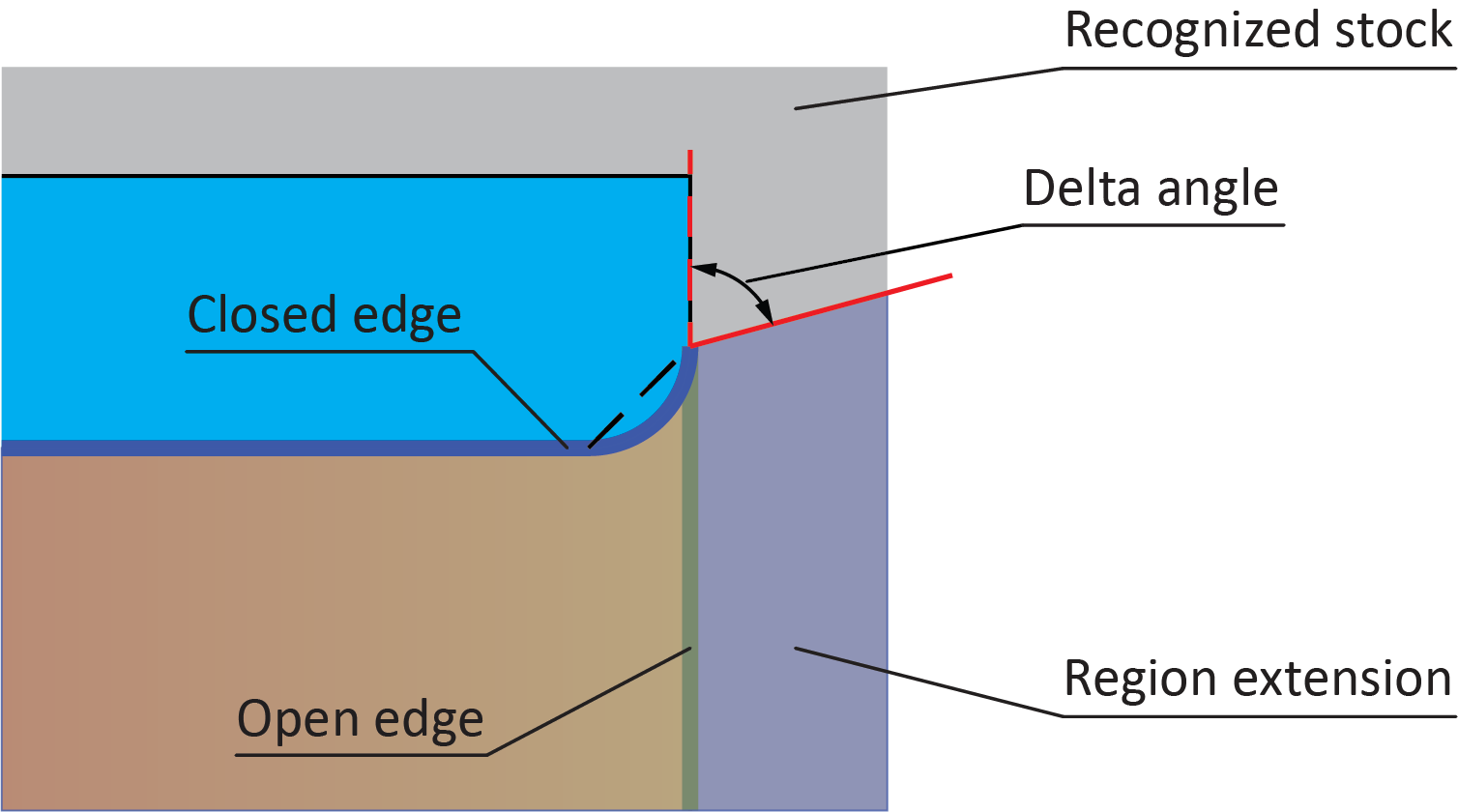Stock Definition 2D
iMachining 2D uses the initial solid model of the stock or the Updated Stock model (USM) from a previous operation as input for the starting Stock model of the current operation. Depending on the types/complexities of the previous operations and the order of the current operation in the CAM tree, the time required to calculate the USM could be quite lengthy.
SolidCAM enables you to choose how the starting Stock model is defined for iMachining 2D operations using one of two Stock Definition Styles.

Automatically is the default selection but with the By Selected Operations style, you can control the number of USM recalculations and save time.
Automatically
The USM generated after processing all previous operations is used as the starting Stock model for the current operation.
By Selected Operations
With this selection, the Updated Stock Based On... window appears.
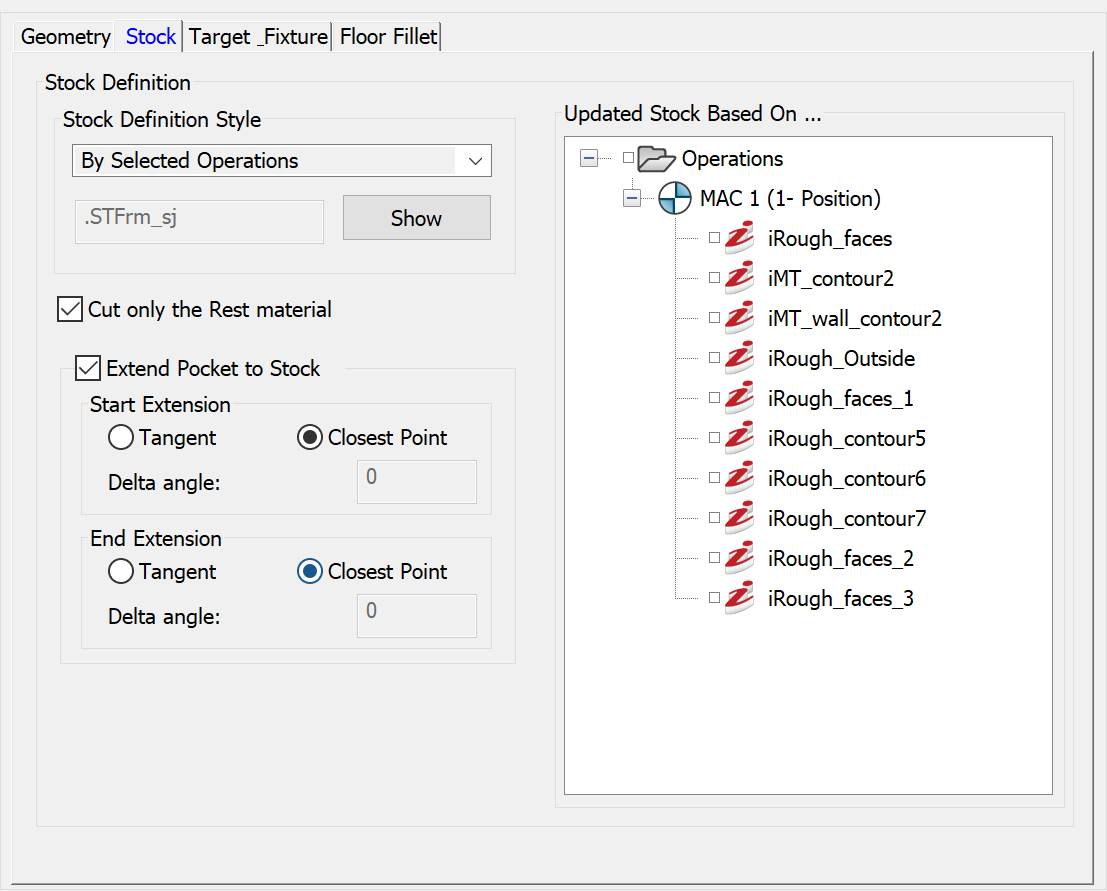
The Operations tree contained in the window shows all the operations preceding the current one. Any number of previous operations, whether calculated or not, can be selected for the USM definition. The USM generated after processing the selected operations is used as the starting Stock model for the current operation.
|
By Selected Operations might be used when you want to ignore non-important operations (e.g., drilling of holes) or those that are not prerequisites to the current operation. |
Show
The field below the Stock Definition Style drop-down list displays the file name of the USM used in the rest material calculation. All *.STFrm files are stored within the CAM-Part. Clicking the Show button displays the USM/starting Stock model in the SOLIDWORKS Graphics Area.
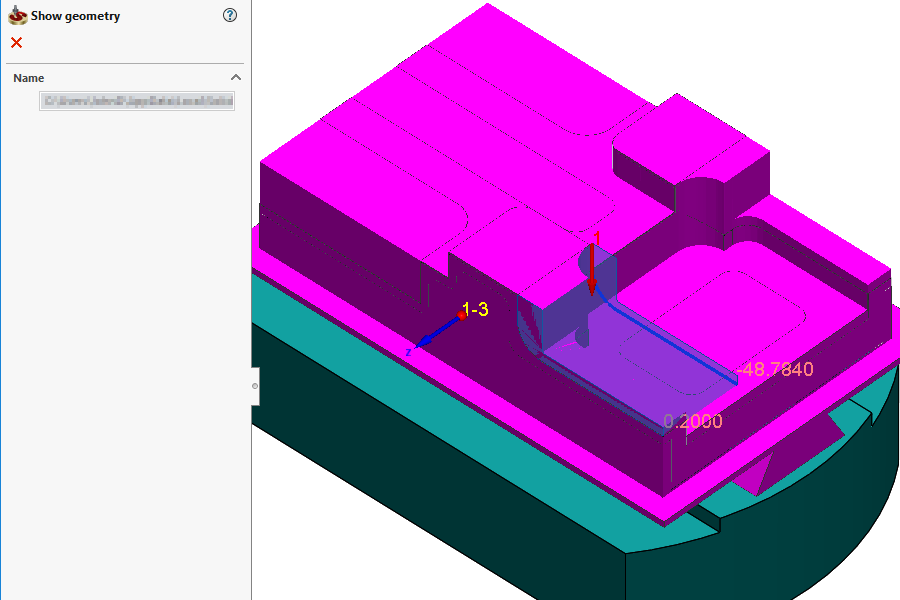
Stock material existing outside the iMachining regions is protected at every stage of the operation machining.
Cut only the Rest material
After every operation in SolidCAM is calculated the exact shape of the remaining stock, which is reflected in the Updated Stock model (USM). This option uses the corresponding USM data in comparison with the Target model to limit the machining to only the rest material geometry.
|
During calculation of the iMachining tool path, no time will be wasted on the air cutting of empty volumes such as those that are already machined. |
Extend Pocket to Stock
In the case of a semi-open pocket geometry, this option extends the iMachining region beyond the open edge(s) if stock material is detected in the open pocket area. Start Extension and End Extension enable you to define the parameters of the pocket geometry extension at the start and end locations of the open edge(s).
Closest Point (default selection) extends the pocket geometry by connecting the adjacent closed edges to the nearest points on the stock boundary.
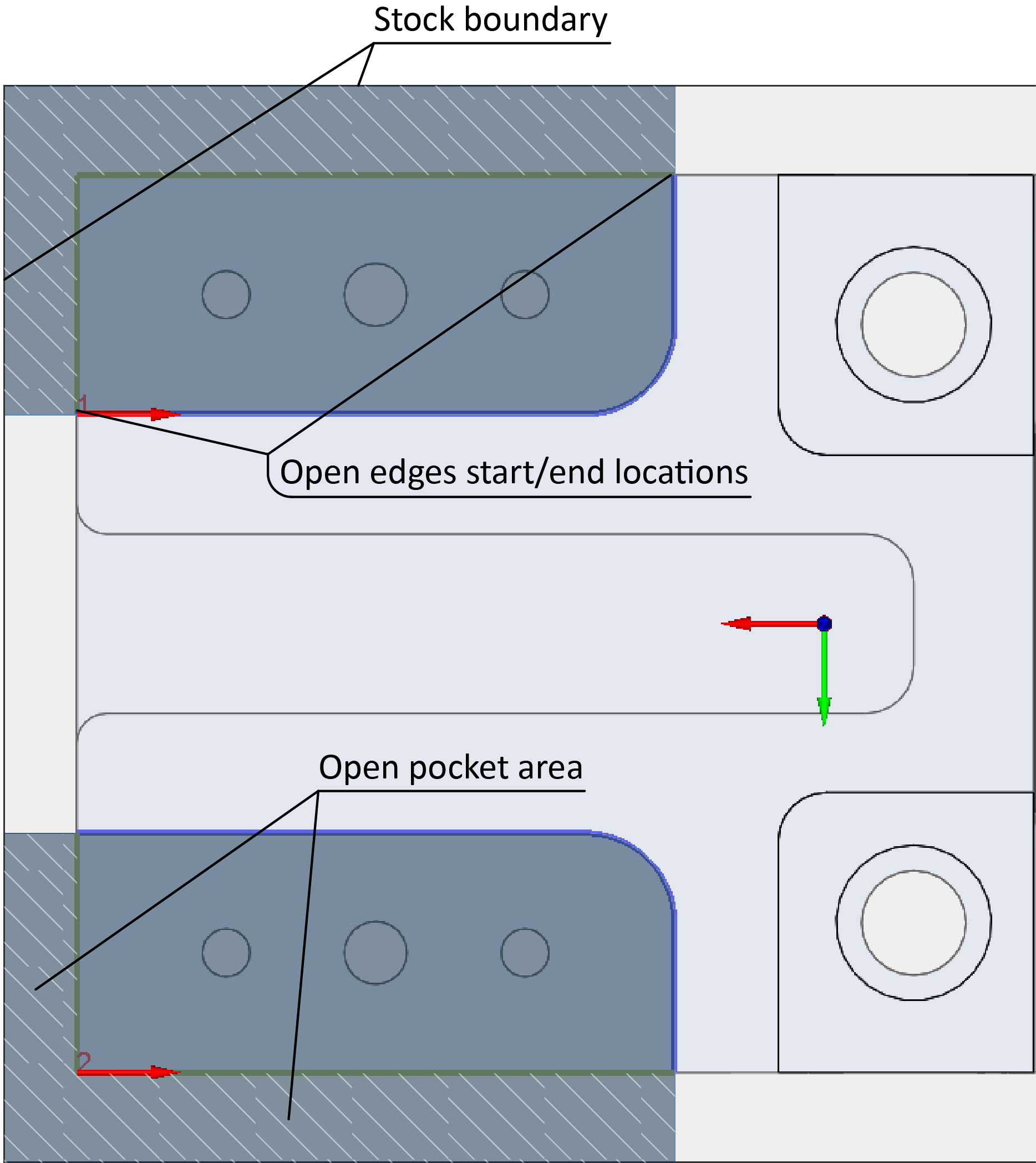
Tangent extends the pocket geometry by tangentially connecting the adjacent closed edges to the stock boundary.
In cases of simple geometries, such as when the open edge is intersected by a chamfer- or fillet-type feature, the selection is switched to Tangent automatically. You can enable Switch to Tangent for simple geometries in the iMachining page of SolidCAM Settings dialog box.
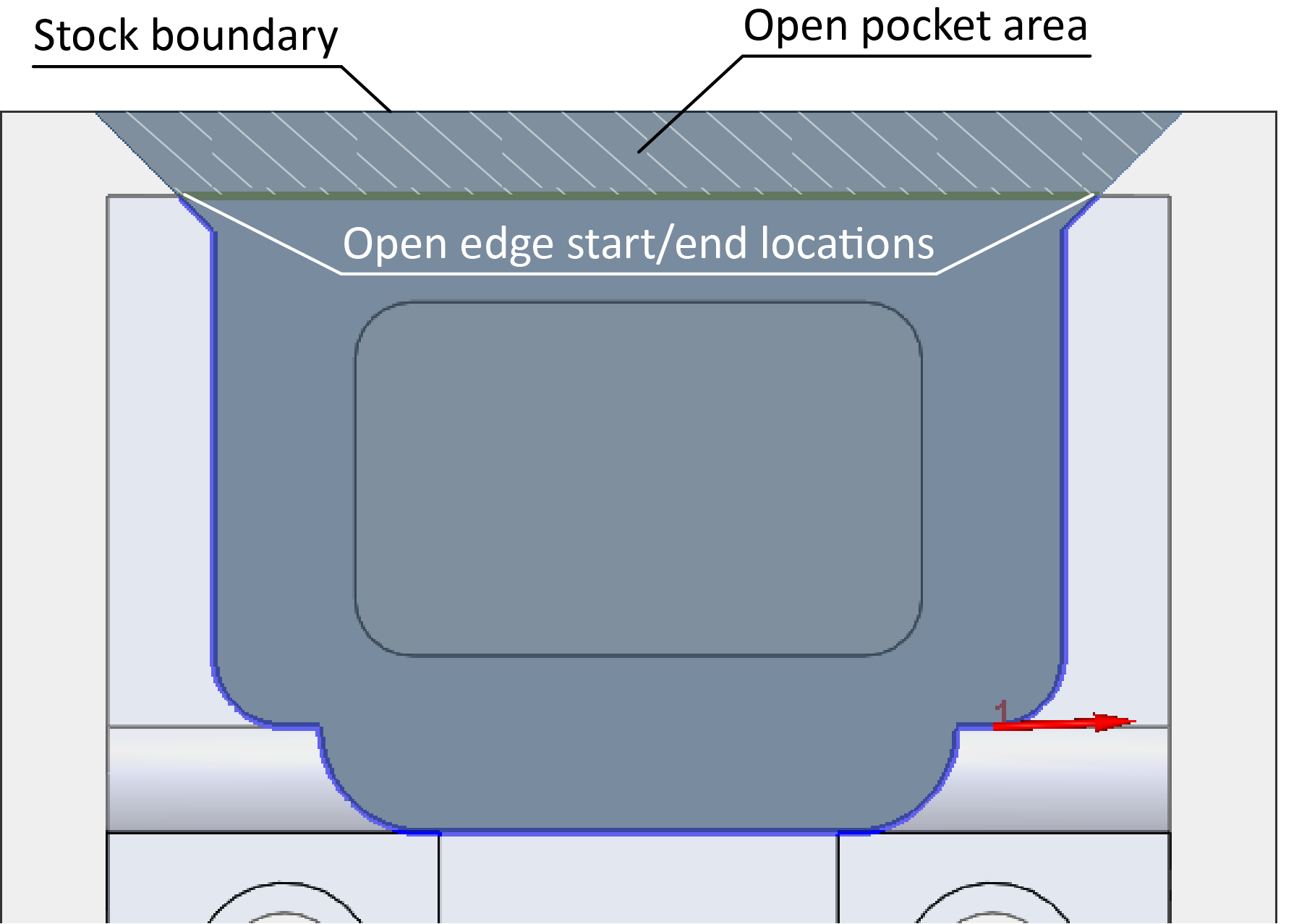
If you instead choose Closest Point, an initial tangent extension is performed in accordance with the tool diameter before connecting the geometry normal to the stock boundary.
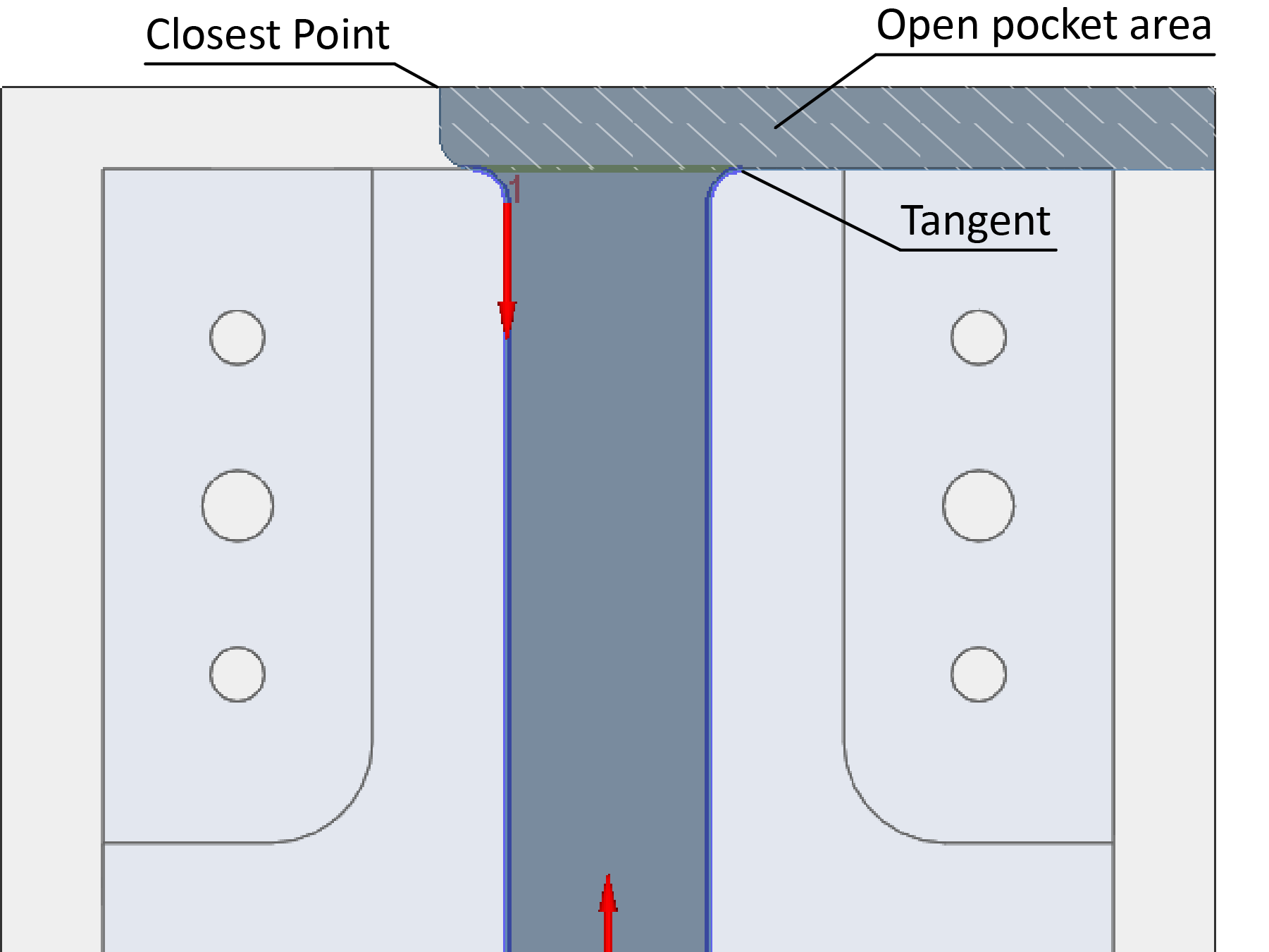
The Delta angle parameter is opened for editing only when the selection is set to Tangent. It can be used to apply an angle to the pocket geometry extension at the open edge start/end locations. SolidCAM automatically determines the direction to which the angle is measured according to the geometric relationship of closed to open edges.
Take, for instance, the two examples described below.
If the closed edge intersects the open edge perpendicularly, the Delta angle is measured away from the open area, consequently increasing the machinable region.
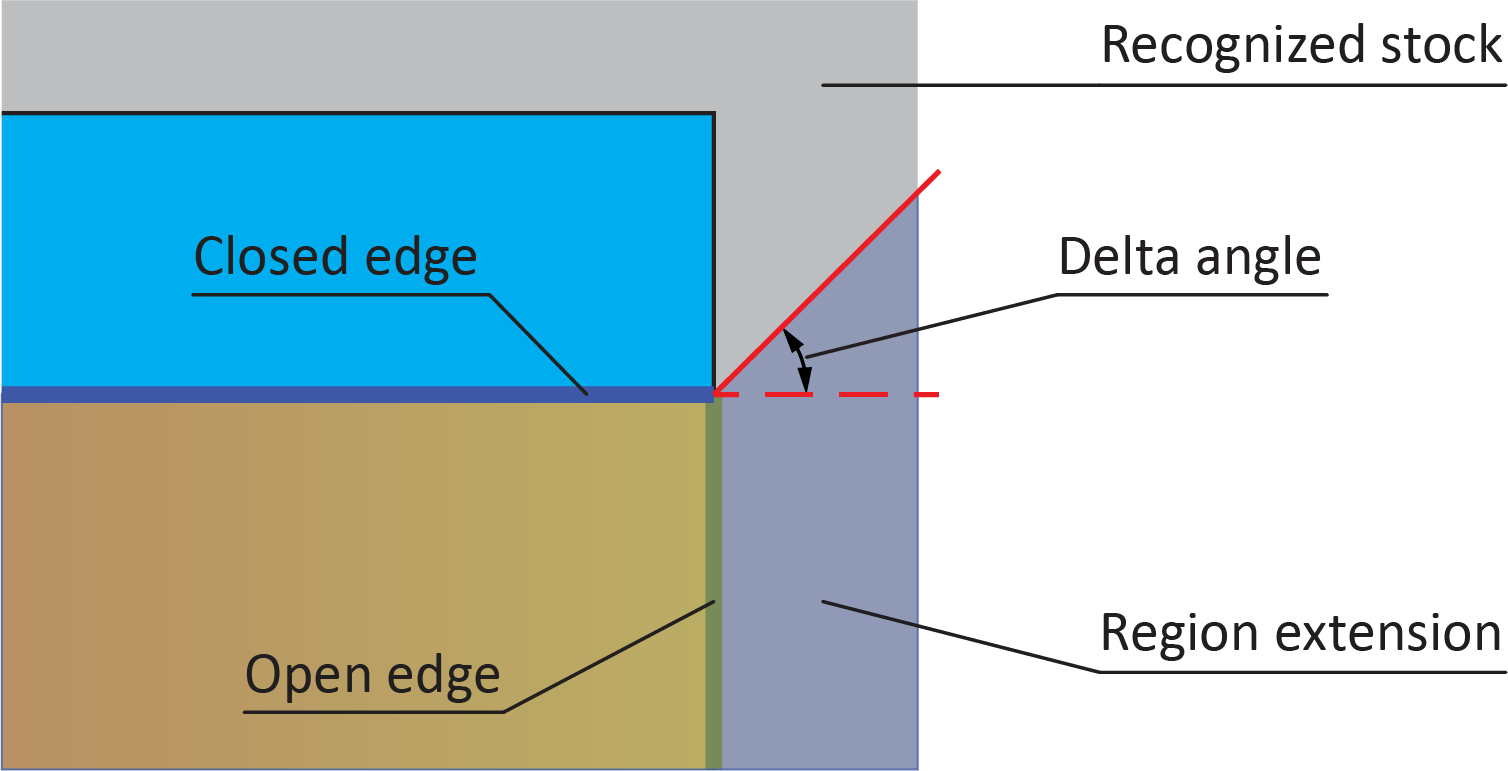
If the closed edge intersects the open edge by either a chamfer- or fillet-type feature, the Delta angle is measured towards the open area, consequently decreasing the machinable region.
